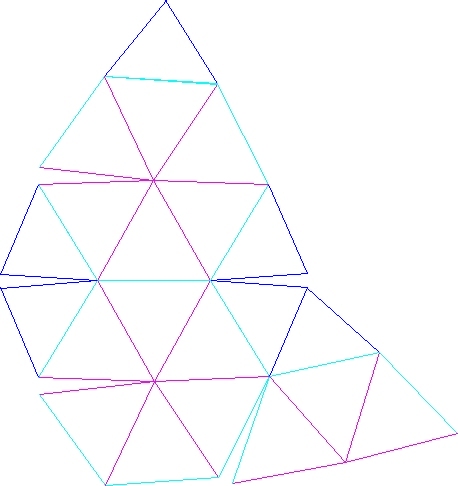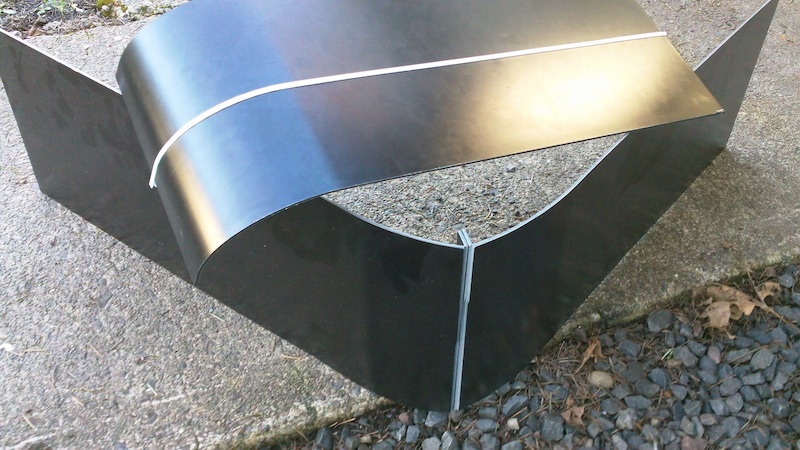Thanks for that. I've had some predictions verified before, but this is the first time someone has confirmed a suggestion I've made, so this is a big deal to me.

I know that you can't expect absolute Cd values from your software, but just for my bragging rights, could you close off the horn with a flat truncation and see how much difference is made there? TIA
Coroplast, if you hadn't noticed, is popular here. It's light and inexpensive. There is a triple-wall variety. The open-wheel racer I posted in Permalink #4 is based on a 4-sided pyramid, shrunk on one diagonal and stretched on the other. It has had a geodesic subdivision applied, in this case 6v or a frequency of six. At 2v it is very angular, like an F-117. Someday I would like to compare 2 through 6v in a wind tunnel. Anyway...
The point being that it is all flat surfaces, be they triangles, diamonds, hexagons or a mixture. If you take a big sheet of coroplast you could cut reliefs on the inner edges and darts on the perimeter to fold a geodesic shape. Here is a (spherical) example from Google:
 https://www.google.com/search?q=geodesic+peel+pattern
https://www.google.com/search?q=geodesic+peel+pattern
Here is something I prepared for another thread showing an edge treatment for coroplast. Un-edged on the left, wrapped with tape in the center, and double folded and wrapped on the right.

Less inexpensive but more permament is Polymetal. I've worked with samples of it:

Compared with 5/8th inch plywood, it is about as stiff, 1/10th the weight and twice the cost.
Check the rule book for perforated base plate. Applied to your roll bar it would be like teeth of a comb diminishing in size behind the roll bar uprights, but not touching it. I doubt a strip of sandpaper on the front would do much in the turbulence coming off the helmet. But you could wear a feather boa or inflated HANS device to fill up the opening you can't put a tonneau cover over.
Edit: Here's another example, using hexagons:
 http://thecookinmama.com/category/diy/
http://thecookinmama.com/category/diy/
They didn't make V-cuts, or just wide cuts, so it's folded the wrong way. With an ellipsoid, the relief cuts on the inner surface will be wider in the pointy ends than in the middle. Due to the dihedral angles.